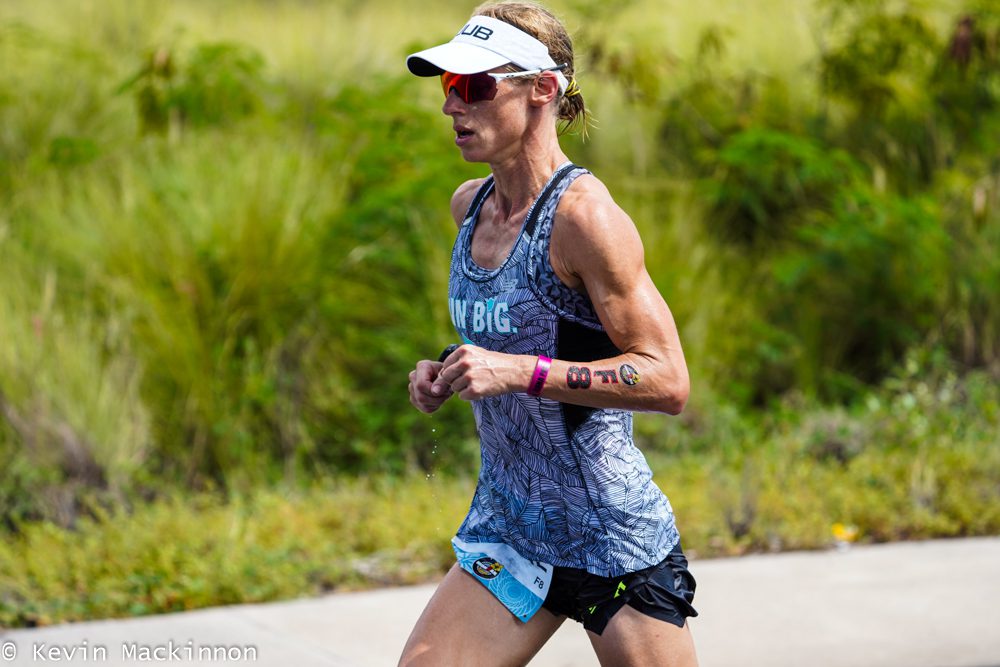Long run preparation: teaching the body to run with tired muscles
Practice makes perfect when it comes to running well off the bike

Full-distance runs are not necessarily about speed, but rather your ability to run with tired muscles and handle the impact on your body – every time your foot hits the ground your body must handle a force equal to about 2.5 times your body weight. Handling that impact and being able to stay on pace as your muscles start to fatigue will be your main limiters during the final leg of a full-distance event. The pace itself is relatively easy during a full-distance race. Your heart and lungs will probably be able to go all day at that effort, but muscular fatigue will eventually get the better of you.
Which is why it’s important to develop an ability to tolerate the impact forces your body must endure while you run. One way to do that is to run hills –not just going up, but also going down, too. Running downhill can dramatically improve your ability to handle the forces your body needs to absorb when you’re running. This type of training has to be approached with caution, though. Softer surfaces are better, and the gradient should not be overly steep: five degrees of incline/ decline is usually enough. It does not take much to increase the load experienced by the body when running downhill. Interval sets that include running up and down hills are the most effective and time efficient way to train.
The second strategy to help improve impact tolerance is to include regular long runs (over 90 minutes) and ensure that you run a few times a week. A smart training program will increase your run duration and frequency gradually so your body has time to recover and adapt. It’s also important to run on pavement. Many athletes will head for softer surfaces for long runs, which is fine at certain times of the year, but leading into a full-distance event you should spend some time running on pavement if that is the surface you’ll be racing on. You don’t have to run on pavement all the time, but it’s good to have a mixture of soft and hard surfaces to make sure your legs are ready.

Race day pace
Pacing on your long runs is incredibly important. One of the biggest mistakes athletes make is to execute their long runs at a pace or effort that is too slow. Long runs leading into a full-distance race should be at the same pace you are aiming for on race day. These workouts will be challenging and don’t need to be done all year – a block of 12 to 16 weeks, with one race specific run per week, is sufficient.
How far?
The length of the longest runs are important. Professionals may be able to complete 35 to 37 km in a 2.5 hour run. But what if you are aiming for a four- to five-hour marathon? Should you do a four-hour run leading in so you can get close to the full distance? No. There is a point where the risk of injury from all the impact outweighs the physiological benefits you stand to gain by going longer. One way to increase the run mileage with less risk of injury is to incorporate some double-run days. You can do a long run in the morning maxing out at 2.5 to 2.75 hours and a shorter 20- to 30-minute run on the same day that evening to add some more mileage with less risk of injury
Eating on the way
Practising your nutrition strategy seems obvious, but it is often ignored during long training runs as you don’t really need much for two to three hours of activity. But, if the run is after 5+ hours of swimming and biking, this changes things dramatically. You need to train your gut to accept, process and absorb the fuel you put into it. You also need to test, with frequency, whether the plan you have on paper is actually going to work. When you arrive at the start line there should be absolutely no question that your gut will tolerate what you are putting into it. Focus on taking in small amounts frequently so your gut doesn’t have to deal with too much at any given time and so your blood sugar stays as level as possible. Transition workouts leading into a long race don’t need to be overly complicated. Running off the bike is best done on your long ride days so you can experience what it will feel like to run after a big day in the saddle. Fifteen to 20 minutes at your goal race pace is usually enough for your body to make the switch from biking to running. On a few occasions you can include a longer run of 45 to 60 minutes so you feel mentally ready to go, but anything longer than that is unnecessary and can lead to longer recovery times.
RELATED: Nail your key race and training sessions through smart nutrition
Mental prep
Perhaps one of the most important skills to develop is your ability to cope mentally with the challenge of the marathon after swimming and biking. There are several strategies you can incorporate. The first is to actually get through the training with consistency. The tougher you are in training, the more confidence you will have that you can be tough when it counts. The second strategy is to break the long runs up into smaller, more manageable chunks. Focusing on smaller time, or distance, intervals is easier to handle mentally. Finally, it’s important to focus on what you’re thinking about during long runs. The internal dialogue you have with yourself can dramatically affect the quality of a training session. Evaluate whether the dialogue is helping or hurting your ability to stay focused and keep going. Negative thought patterns are often counterproductive. Understanding, and having a strong sense of why you are doing what you are doing, is very powerful. You need to use positive language that will help you achieve your goals, not lead to their undoing. The more you do this in training, the more natural it will become in the race.
This story originally appeared in the July & August 2016 issue of Triathlon Magazine Canada
Jasper Blake won Ironman Canada in 2006 and is the head coach of B78 Coaching
